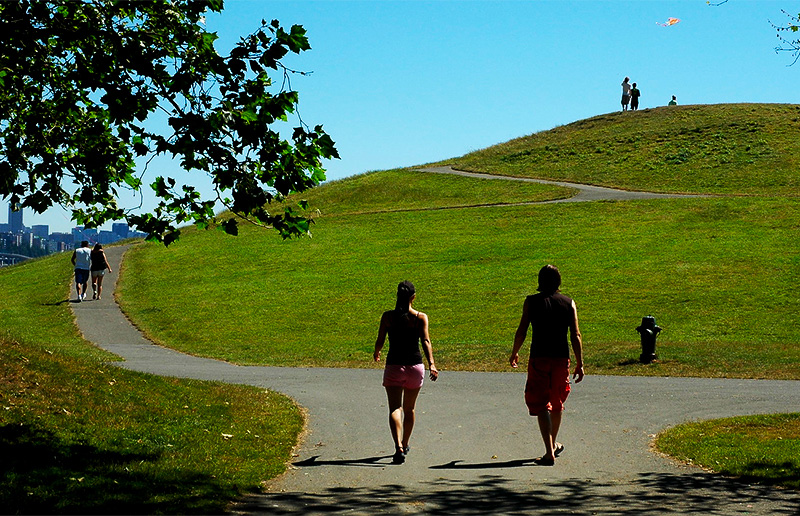 Walking and hiking are great ways to exercise and enjoy the best that nature has to offer this summer. While social distancing may prevent many rosacea patients from visiting gyms or taking part in organized sporting events, it’s easy to walk and hike independently or in a safely distanced group. Unfortunately, it’s also easy to overlook the potential for a rosacea flare-up while walking for exercise.
Walking and hiking are great ways to exercise and enjoy the best that nature has to offer this summer. While social distancing may prevent many rosacea patients from visiting gyms or taking part in organized sporting events, it’s easy to walk and hike independently or in a safely distanced group. Unfortunately, it’s also easy to overlook the potential for a rosacea flare-up while walking for exercise.
Past NRS surveys have shown walking has been known to cause flare-ups in around 40 percent of rosacea patients. One survey even suggested that walking was the most common form of exercise to produce rosacea flares, though this is likely because of its popularity among rosacea patients rather than its having a greater potential to cause flares than other activities, such as jogging or lifting weights. Fortunately, survey results also suggest that the risk of causing a flare-up through exercise can be effectively mitigated by taking precautions. One survey found that 97 percent of patients who modified their routine were successfully able to avoid exercise-induced flare-ups.
If you’re hoping to burn some sneaker rubber hiking and walking this summer, consider these tips for reducing the rosacea triggers that might cross your path:
Protect yourself from the sun. Even if physical exertion doesn’t cause your rosacea to flare, sun exposure may. Wear a hat to protect your face and apply sunscreen before setting out. Try a formula that contains physical blockers like zinc oxide and titanium dioxide and offers at least 30 SPF. Visit our sunscreen page for more recommendations.
Be careful with bug spray. If you’re walking in a more rustic area and need to use insect repellent, be careful to avoid spraying too close to the face or any area where skin is sensitive. Due to the likelihood of touching your face, wash your hands after applying repellent. You might try applying the spray to your clothing (socks, pant legs, etc.) rather than directly onto your skin.
Plan your walk strategically. Try to walk in the early morning or evening when it’s cooler and there’s less sun,, and avoid exercising during the hottest hours of the day. It might also make sense to walk in an area close to your home or parked car so that you can cut the walk short if you start to feel flushed.
Try to stay as cool as possible. Keep yourself from overheating by draping a cool, damp towel around your neck and carrying a water bottle filled with ice water to sip. You could also try using a spray bottle filled with cool water to mist your face as you walk.
Know your personal limits. If you’re getting back into a fitness routine or starting something completely new, it might not be a good opportunity for socializing. Try walking on your own first to learn your pace and physical limits. Exercising with others can almost subconsciously push us to perform while ignoring signs of discomfort or exertion that we would normally notice if we were alone.
Take it slow. Inclines and other changes in topography can be essential to the experience of hiking, but they’re still challenging even at a slower pace. Rather than powering through the steep portions of a walk, pay attention to the changes in incline and take your time moving up appropriately. It might mean avoiding a flushed face for days to come.
Treat your skin well after walking. What you do following exercise might have as much effect on your skin as your workout. It can be tempting to nap in a hammock or play with the dog after finishing a walk, but they might not be the best immediate choices for your skin. Follow your standard skincare routine and practices, and avoid leaving skin sweaty and damp for an extended period of time after exercising.
Image courtesy of Wonderlane on flickr.